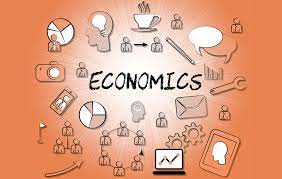World Economies: Structures, Trends, Challenges, and the Path Forward

Strong 8k brings an ultra-HD IPTV experience to your living room and your pocket.
Introduction
The global economy is a vast and dynamic system that comprises the production, distribution, and consumption of goods and services across the world. From the bustling tech hubs of Silicon Valley to the manufacturing giants in East Asia, and the oil-rich nations of the Middle East to the resource-dependent countries of Africa, world economies are deeply interconnected. Globalization, technological innovation, international trade, and financial markets are just a few of the forces that shape these economies. Understanding how different countries manage their economic systems, and how global trends and challenges impact them, is vital for policymakers, investors, students, and citizens alike. This article dives deep into the different economic models, major economic powers, emerging trends, challenges, and the collective future of the world economy.
1. Economic Systems: The Foundations of Global Economies
1.1 Market Economies
Market economies are systems where economic decisions—such as pricing, production, and distribution—are primarily made through free market mechanisms. In these economies, businesses are privately owned and compete for profit, and consumer demand drives innovation and efficiency. The United States, Canada, and South Korea are classic examples. These countries typically encourage entrepreneurship, limit government intervention, and rely on competition to allocate resources. However, market economies also face criticisms for enabling wealth inequality, encouraging monopolistic behavior, and sometimes failing to provide basic public services for all.
1.2 Command Economies
In a command economy, the government controls all major aspects of economic production. It decides what goods should be produced, how much should be made, and at what price they should be sold. This system aims to eliminate inequality by redistributing resources according to social priorities. While the former Soviet Union and North Korea are extreme examples of this model, modern-day China maintains significant government control over strategic industries, even while embracing market mechanisms. Although command economies can be effective in mobilizing resources quickly, they often suffer from inefficiencies, lack of innovation, and poor consumer satisfaction.
1.3 Mixed Economies
Most countries today follow a mixed economic system—a balance between free-market principles and government regulation. Nations like France, India, and the United Kingdom combine private enterprise with significant government involvement in areas like healthcare, education, transportation, and social welfare. This model seeks to merge the benefits of market efficiency with social equity. Mixed economies are considered more resilient because they can adapt to economic shocks while maintaining essential services for the population.
1.4 Traditional Economies
Traditional economies are rooted in customs, beliefs, and long-standing practices. These are typically found in rural or tribal regions where economic roles are inherited, and systems like bartering replace money. Such economies rely heavily on subsistence agriculture, hunting, and local trade. While traditional economies are sustainable and closely tied to the environment, they often struggle with poverty, limited access to healthcare and education, and vulnerability to climate change and market disruptions.
2. Global Economic Powerhouses: Giants Shaping the World
2.1 United States of America
As the world’s largest economy by nominal GDP, the United States plays a central role in shaping the global economic landscape. It boasts a diversified economy led by high-tech innovation, financial services, healthcare, defense, and entertainment. American companies such as Apple, Microsoft, Google, and Amazon have significant global reach. The U.S. dollar also serves as the dominant global reserve currency, giving it immense financial influence. However, the country also grapples with growing income inequality, trade deficits, and political polarization, which affect economic stability.
2.2 China
China has experienced meteoric economic growth since the 1980s, transforming itself from a poor agrarian society to the world's second-largest economy. With a focus on manufacturing, infrastructure, exports, and technological advancement, China has lifted hundreds of millions out of poverty. Through initiatives like the Belt and Road Initiative (BRI), China is expanding its economic influence in Asia, Africa, and Europe. Despite its achievements, China faces challenges such as over-reliance on real estate, rising debt levels, and increasing tensions with the U.S. over trade and technology.
2.3 European Union
The European Union (EU), a unique political and economic union of 27 countries, represents one of the largest and most stable economic blocs globally. With a strong emphasis on sustainability, consumer protection, and trade regulation, the EU provides a high standard of living and advanced infrastructure. Key players include Germany (Europe’s industrial engine), France, and Italy. The Eurozone, using a common currency, facilitates easier trade among member nations. However, the EU faces long-term issues such as aging populations, Brexit fallout, and energy dependency.
2.4 Japan
Japan, the world’s third-largest economy, is renowned for its technological advancements, manufacturing excellence, and disciplined workforce. Companies like Toyota, Sony, and Panasonic exemplify Japanese innovation. Despite a strong export-oriented economy, Japan faces domestic hurdles like a shrinking and aging population, deflation, and a heavy public debt burden. Efforts to revitalize the economy through "Abenomics" have had mixed results, though Japan remains a global financial and technological leader.
2.5 India
India is a rising star on the global economic stage, with a large and youthful population, expanding digital infrastructure, and a growing middle class. It has made significant strides in sectors like information technology, pharmaceuticals, and space exploration. Initiatives such as "Digital India" and "Make in India" aim to modernize its economy and attract foreign investment. Despite this, India still grapples with poverty, unemployment, unequal development, and the need for widespread infrastructure improvements.
2.6 Emerging Economies
Countries such as Brazil, Indonesia, Nigeria, Turkey, and South Africa represent the global south’s increasing influence. Rich in natural resources and young labor markets, these nations offer growth potential. However, political instability, corruption, inflation, and weak institutions often hamper their progress. Collective groups like BRICS (Brazil, Russia, India, China, South Africa) seek to create alternative economic platforms to the Western-led financial systems.
3. Global Trends Reshaping Economies
3.1 Technological Disruption
The digital revolution is perhaps the most transformative force in modern economics. Artificial Intelligence, automation, blockchain, and the Internet of Things (IoT) are disrupting traditional industries and creating new ones. These technologies improve efficiency but also risk displacing millions of jobs. Countries investing in digital skills and infrastructure are likely to dominate in the future. The rise of the gig economy and remote work culture is reshaping labor markets and city planning globally.
3.2 Climate Change and Green Economy
Sustainability has become a central focus for modern economies. Governments and corporations are investing heavily in renewable energy, electric vehicles, and sustainable agriculture. The transition to a green economy is not just a moral obligation—it is an economic necessity. Nations that delay the transition may face environmental disasters, resource depletion, and global sanctions. Carbon pricing, green bonds, and ESG investing are becoming mainstream in economic planning.
3.3 Geopolitical Shifts
Economic decisions are increasingly influenced by geopolitics. The U.S.-China rivalry, Russia’s war in Ukraine, and tensions in the South China Sea are examples of how political conflicts disrupt trade, energy prices, and supply chains. Sanctions, tariffs, and shifting alliances are altering traditional economic partnerships. Countries are rethinking dependencies and investing in economic resilience.
3.4 Demographic Evolution
Population trends vary widely across regions. Europe and Japan face labor shortages due to aging populations, while Africa and South Asia see a youth explosion. Countries must adapt by reforming immigration, investing in education, and promoting workforce participation. Countries like Nigeria and Ethiopia could become economic engines if they successfully harness their demographic dividend.
4. Common Challenges Across Economies
4.1 Inequality and Poverty
Despite global growth, inequality is rising both within and between countries. The richest 1% hold more wealth than the bottom 50% of the population. Disparities in access to healthcare, education, and digital tools deepen the economic divide. Inclusive growth—where benefits reach the marginalized—is critical for political and social stability.
4.2 Public Debt and Fiscal Deficits
The COVID-19 pandemic led to unprecedented public spending, ballooning government debts worldwide. Countries now struggle to balance fiscal responsibility with social spending. High debt levels in countries like Italy, Japan, and Argentina raise concerns about long-term economic health and the risk of default.
4.3 Unemployment and Underemployment
Millions remain jobless or underemployed globally, especially among youth. Automation, outsourcing, and economic stagnation are key drivers. Governments are exploring vocational training, startup support, and labor market reforms to address this growing crisis.
4.4 Energy Security
With fossil fuel resources depleting and renewable alternatives still under development, energy security has become a pressing issue. The transition to sustainable energy must be just, affordable, and secure, especially for energy-importing nations.
5. Global Institutions and Their Role
5.1 International Monetary Fund (IMF)
The IMF supports global financial stability through loans, economic monitoring, and policy advice. It steps in during crises to assist struggling economies but is often criticized for imposing austerity measures.
5.2 World Bank
The World Bank provides funding for development projects focused on poverty reduction, infrastructure, and education in developing nations. Its mission has expanded to include climate resilience and gender equity.
5.3 World Trade Organization (WTO)
The WTO promotes fair and free trade among nations. It settles disputes, ensures trade rules are followed, and helps countries integrate into the global economy. However, it has faced criticism for being ineffective in recent years due to geopolitical disagreements.
6. The Road Ahead: Preparing for the Future
The future of world economies depends on how nations manage change. Collaboration, innovation, and ethical governance will be essential. Some key strategies include:
Investing in education to build a future-ready workforce
Fostering regional cooperation for shared prosperity
Balancing growth with sustainability
Ensuring financial inclusivity through digital banking and microcredit
Building resilient infrastructure to face climate and geopolitical risks
Conclusion
The global economy is an ever-evolving system shaped by culture, politics, innovation, and natural resources. Each economy, whether large or small, has a role in the interconnected web of trade, finance, and development. In an era of uncertainty and opportunity, it is essential that the world moves forward with collaboration, inclusivity, and sustainability at its core. The future belongs to economies that are not only strong but also fair, green, and resilient.
Note: IndiBlogHub features both user-submitted and editorial content. We do not verify third-party contributions. Read our Disclaimer and Privacy Policyfor details.




